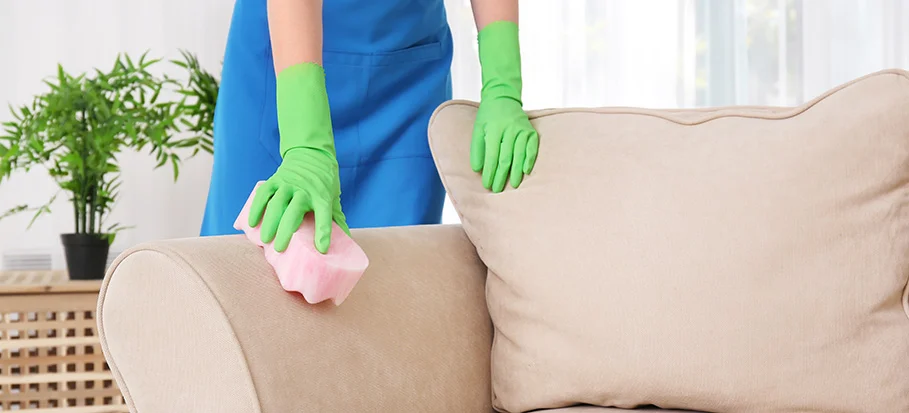How to Clean a Polyester Couch: A Comprehensive Guide
Polyester couches are popular choices for many households due to their durability, affordability, and ease of maintenance. However, like any furniture, they can accumulate dirt, stains, and odors over time. Knowing how to properly clean and maintain a polyester couch can help extend its life and keep it looking fresh and inviting. This article provides a detailed, step-by-step guide on how to clean a polyester couch, along with tips for regular maintenance and stain removal.
Understanding Polyester Fabric
Polyester is a synthetic fabric made from a type of polymer known as polyethylene terephthalate (PET). It is widely used in upholstery due to its strength, resistance to wrinkles, and ability to retain color. Polyester is also relatively easy to clean compared to natural fibers, making it a popular choice for furniture.
Benefits of Cleaning Your Polyester Couch
- Prolongs Lifespan: Regular cleaning helps prevent dirt and grime from breaking down the fibers of the fabric, extending the life of the couch.
- Improves Appearance: A clean couch enhances the overall look of your living space, making it more inviting.
- Removes Odors: Cleaning helps eliminate odors caused by spills, pets, or general use.
- Maintains Hygiene: Regular cleaning reduces allergens and bacteria that can accumulate in upholstery.
Supplies Needed for Cleaning
Before you start cleaning your polyester couch, gather the following supplies:
| Item | Purpose |
|---|---|
| Vacuum cleaner | To remove loose dirt and debris |
| Soft-bristle brush | To loosen dirt and dust |
| Microfiber cloth | For wiping surfaces and applying cleaning solutions |
| Mild laundry detergent | For cleaning the fabric |
| White vinegar | Optional; for stain removal and deodorizing |
| Bowl of warm water | For diluting cleaning solutions |
| Spray bottle | For applying cleaning solutions |
| Clean sponge | For spot cleaning |
| Soft towel | For drying and buffing |
Step-by-Step Cleaning Process
Step 1: Check the Care Label
Before cleaning your polyester couch, check the care label for specific cleaning instructions. The label may include symbols indicating the recommended cleaning method:
- W: Clean with water only
- S: Solvent-based cleaner only
- WS: Water or solvent-based cleaner
- X: Vacuum only; professional cleaning recommended
Understanding these codes will help you choose the right cleaning method and avoid damaging the fabric.
Step 2: Remove Loose Dirt and Debris
Start by using a soft-bristle brush to gently loosen any dirt, crumbs, or debris from the surface of the couch. This step is crucial to prevent dirt from embedding itself deeper into the fabric during the cleaning process.
Step 3: Vacuum Thoroughly
Attach the upholstery attachment to your vacuum cleaner and thoroughly vacuum the entire couch, including the cushions and crevices. This will help remove any remaining dirt and dust, ensuring a clean surface for the next steps.
Step 4: Prepare the Cleaning Solution
For most polyester couches, a mild laundry detergent mixed with warm water works well. In a bowl, mix a small amount of detergent with water until it is well-diluted. If you prefer a natural solution, you can mix equal parts of white vinegar and water.
Step 5: Test the Cleaning Solution
Before applying the cleaning solution to the entire couch, test it on a hidden or inconspicuous area to ensure it does not cause discoloration or damage. Wait a few minutes to see how the fabric reacts.
Step 6: Clean the Surface
Dampen a microfiber cloth in the cleaning solution, wringing out excess moisture. Gently wipe down the entire surface of the couch, working in small sections. Avoid soaking the fabric, as excessive moisture can lead to mold and mildew.
Step 7: Focus on Stains
For stubborn stains, create a slightly stronger cleaning solution by adding more detergent. Apply the solution directly to the stained area using a clean cloth. Gently blot the stain, avoiding vigorous rubbing, which can push the stain deeper into the fabric.
Step 8: Rinse with Clean Water
Using a separate clean cloth dampened with plain water, wipe down the couch again to remove any detergent residue. This step is essential to prevent the fabric from becoming stiff due to leftover cleaning products.
Step 9: Dry the Couch
Allow the couch to air dry in a well-ventilated area, away from direct sunlight and heat sources. Avoid using hairdryers or other artificial heat, as they can damage the polyester fibers.
Step 10: Fluff and Replace Cushions
Once the couch is completely dry, fluff the cushions to restore their shape and place them back onto the couch. This will help maintain the couch’s appearance and comfort.
Step 11: Regular Maintenance
To keep your polyester couch looking its best, vacuum it regularly to prevent dirt and debris from accumulating. Consider placing a throw or blanket over high-use areas to protect the fabric from everyday wear.
Deep Cleaning Your Polyester Couch
In addition to regular cleaning, deep cleaning your polyester couch every six months can help rejuvenate its appearance. Here are some steps for deep cleaning:
- Steam Cleaning: If your couch is labeled as “W” or “WS,” consider using a steam cleaner to lift dirt and grime. Follow the manufacturer’s instructions for your steam cleaner and avoid oversaturating the fabric.
- Professional Cleaning: For couches marked with an “X,” it is best to hire a professional cleaning service that specializes in upholstery cleaning.
- Spot Cleaning: For specific stains, use a mixture of baking soda and water to create a paste. Apply it to the stain, let it sit for a few minutes, and then rinse with a damp cloth.
Tips for Maintaining Your Polyester Couch
- Rotate Cushions: Regularly rotate and flip the cushions to ensure even wear and prevent permanent indentations.
- Use Fabric Protectors: Consider applying a fabric protector to help repel stains and spills.
- Avoid Harsh Chemicals: Steer clear of bleach and other harsh chemicals that can damage the fabric.
- Promptly Address Spills: Quickly blot spills with a clean cloth to prevent stains from setting.
- Use a Lint Roller: For quick clean-ups, use a lint roller to remove pet hair and debris from the couch.
Common Stains and How to Remove Them
- Food and Beverage Stains: Blot the area with a clean cloth to absorb excess liquid. Use a mixture of mild detergent and water to clean the stain, then rinse with a damp cloth.
- Ink Stains: Dab the stain with rubbing alcohol using a cotton ball. Blot gently until the ink is lifted, then rinse with water.
- Pet Stains: For urine stains, use a mixture of vinegar and water. Blot the area, then rinse and dry thoroughly.
- Grease Stains: Sprinkle baking soda on the stain and let it sit for 15 minutes. Vacuum the area, then clean with a mild detergent solution.
Conclusion
Cleaning and maintaining a polyester couch is essential for preserving its appearance and longevity. By following the steps outlined in this guide, you can effectively clean your couch, address stains, and keep it looking fresh. Regular maintenance and prompt attention to spills will ensure that your polyester couch remains a comfortable and stylish centerpiece in your home.
FAQ
- How often should I clean my polyester couch?
- It is recommended to vacuum your polyester couch weekly and perform a deep clean every six months.
- Can I use bleach on my polyester couch?
- No, bleach and harsh chemicals can damage polyester fabric. Stick to mild detergents and natural cleaning solutions.
- What should I do if my couch has a stain?
- Blot the stain with a clean cloth, then use a mild detergent solution to clean it. Avoid rubbing the stain, as this can make it worse.
- Is steam cleaning safe for polyester couches?
- Yes, steam cleaning is safe for polyester couches, but be sure to follow the manufacturer’s instructions and avoid oversaturating the fabric.
- How can I remove pet odors from my polyester couch?
- Sprinkle baking soda on the couch, let it sit for 30 minutes, and then vacuum it up. This will help neutralize odors.
- What does the care label on my couch mean?
- The care label indicates the recommended cleaning method. Codes include “W” for water-based cleaners, “S” for solvent-based cleaners, “WS” for either, and “X” for professional cleaning only.
- Can I machine wash my polyester couch covers?
- If the care label allows, you can machine wash removable polyester covers. Follow the manufacturer’s washing instructions.
- How do I prevent my couch from getting dirty?
- Regularly vacuum your couch, use fabric protectors, and promptly address spills to keep it clean.
- What is the best way to fluff my couch cushions?
- Gently shake and pat the cushions to restore their shape. Rotate them regularly to prevent uneven wear.
- Can I use vinegar to clean my polyester couch?
- Yes, a mixture of vinegar and water can be effective for cleaning and deodorizing polyester fabric.



